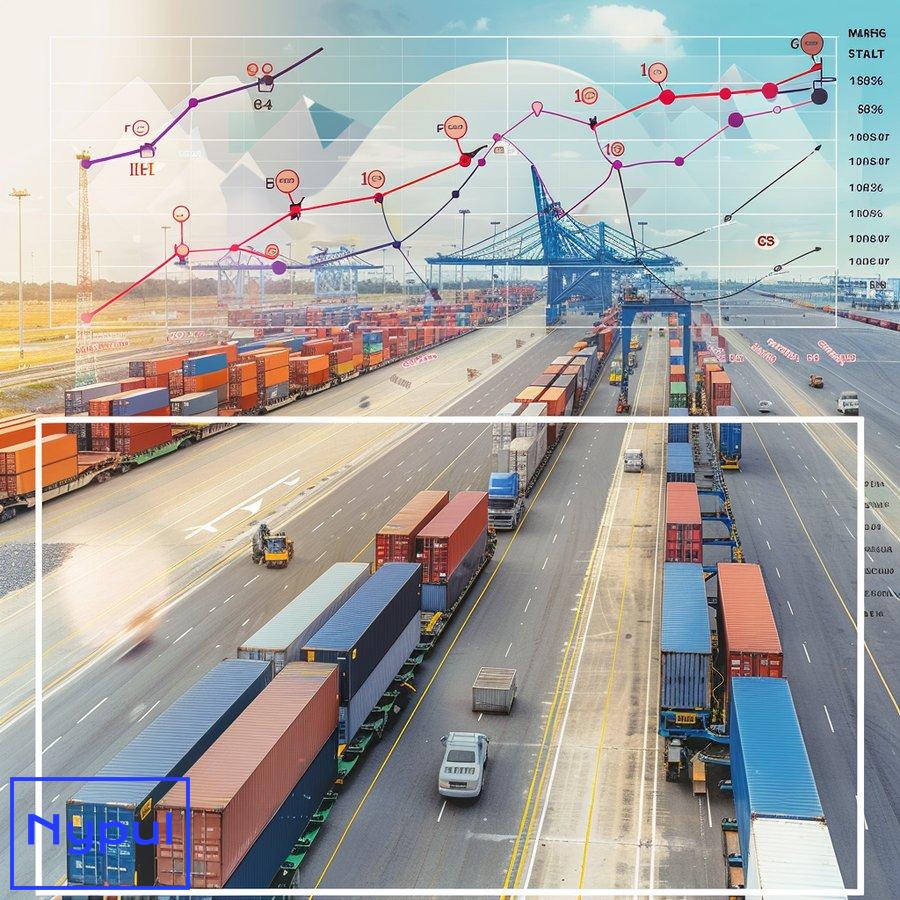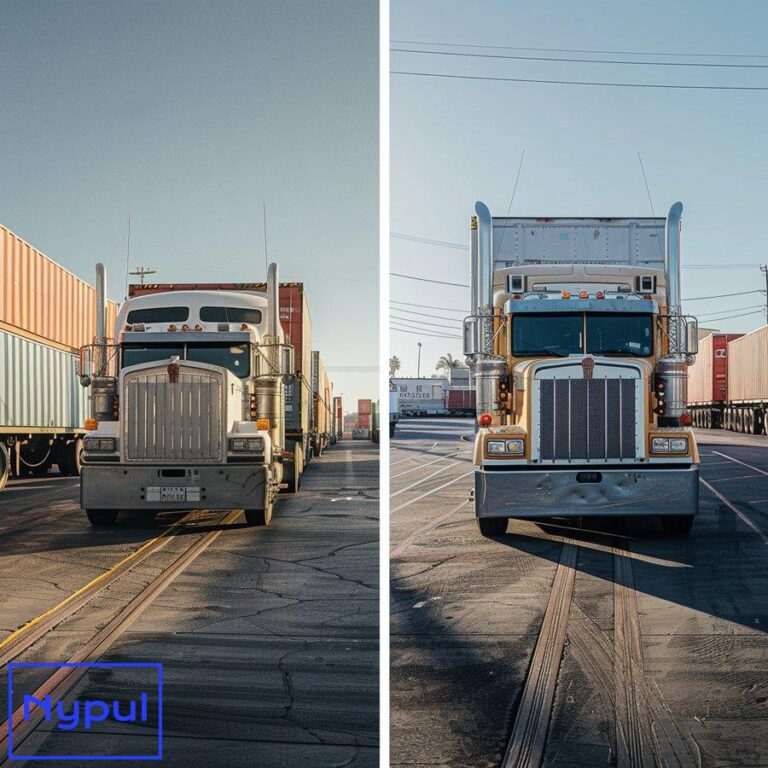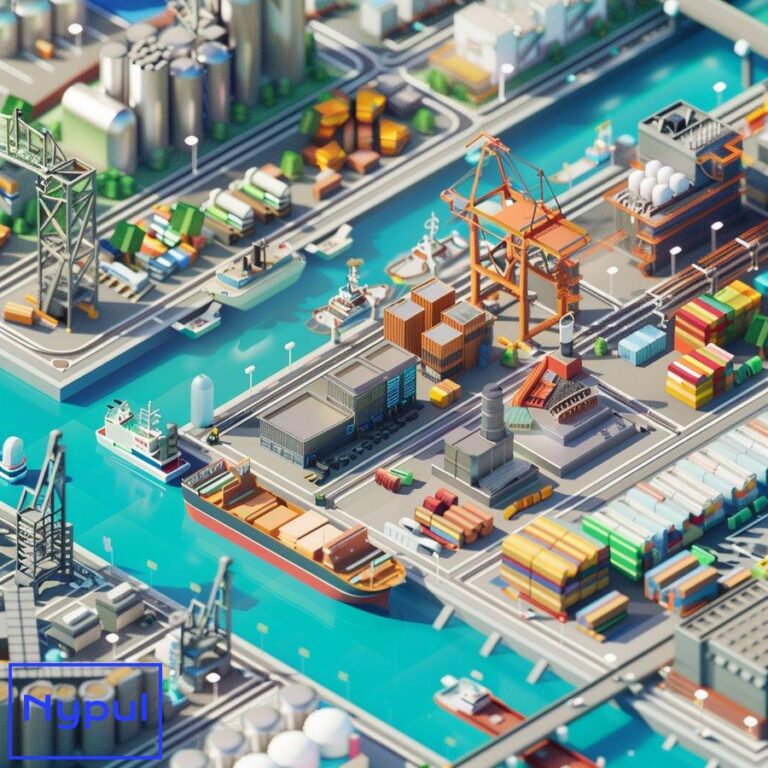How Much Does Drayage Cost Per Mile
How do various factors influence drayage costs per mile?
Drayage costs per mile are influenced by a complex interplay of factors that can significantly impact the final price. Understanding these factors is crucial for businesses looking to optimize their logistics expenses and make informed decisions about their shipping strategies.

Distance and Route
The distance between the origin and destination points is a primary factor in determining drayage costs. Generally, longer distances result in higher per-mile rates. However, this relationship isn’t always linear. Routes with heavy traffic congestion, multiple stops, or challenging terrain may incur higher costs even for shorter distances.
Fuel Prices
Fuel costs are a significant component of drayage expenses. As fuel prices fluctuate, so do drayage rates. Many drayage providers implement fuel surcharges to account for these variations, which can cause per-mile costs to increase or decrease accordingly.
Equipment Type
The type of equipment required for the drayage operation affects the cost per mile. Standard containers are typically less expensive to transport than specialized equipment like refrigerated containers (reefers) or flatbeds. Here’s a comparison of average per-mile costs for different equipment types:
| Equipment Type | Average Cost Per Mile |
|---|---|
| Standard Container | $2.50 – $3.50 |
| Refrigerated Container | $3.50 – $5.00 |
| Flatbed | $3.00 – $4.50 |
| Oversized/Specialized | $5.00 – $7.00+ |
Time Sensitivity
Urgent shipments that require expedited drayage services often come with premium pricing. Rush orders, same-day deliveries, or time-critical shipments can increase the per-mile cost significantly, sometimes by 50% or more compared to standard rates.
Port Congestion and Wait Times
Ports experiencing high levels of congestion can lead to increased drayage costs. Extended wait times for pickup or delivery at congested ports result in higher labor costs and reduced efficiency for drayage providers, which is often reflected in higher per-mile rates.
Seasonal Demand
Drayage costs fluctuate with seasonal demand patterns. Peak shipping seasons, such as the months leading up to major holidays, typically see higher per-mile rates due to increased demand for drayage services and limited capacity.
Regulatory Compliance
Compliance with local, state, and federal regulations can impact drayage costs. Areas with stricter environmental regulations may require the use of newer, cleaner-burning trucks, which can increase operational costs for drayage providers and, consequently, the per-mile rates for customers.
Labor Costs
The cost of labor, including driver wages and benefits, directly affects drayage pricing. Regions with higher living costs or strong labor unions may have higher labor expenses, leading to increased per-mile rates.
Market Competition
The level of competition among drayage providers in a given area can influence pricing. Markets with numerous providers may offer more competitive rates, while areas with limited options may see higher per-mile costs due to reduced competition.
Cargo Characteristics
The nature of the cargo being transported can impact drayage costs. Hazardous materials, oversized loads, or goods requiring special handling often incur higher per-mile rates due to the additional precautions and equipment needed.
Return Trips and Backhauls
The availability of return loads or backhauls can affect the overall cost of drayage. Providers may offer lower per-mile rates if they can secure a return shipment, as this improves their operational efficiency and reduces empty miles.
Infrastructure Quality
The condition of roads, bridges, and other transportation infrastructure along the drayage route can influence costs. Poor infrastructure may lead to slower transit times, increased fuel consumption, and higher maintenance costs for vehicles, all of which can result in higher per-mile rates.
Insurance and Liability
The cost of insurance and potential liability risks associated with specific cargo types or routes can impact drayage pricing. High-value or high-risk shipments may require additional insurance coverage, leading to increased per-mile costs.
By considering these factors, shippers can better understand the components that contribute to their drayage expenses and work with providers to optimize their logistics strategies. Recognizing the interplay between these elements allows for more accurate budgeting and informed decision-making when selecting drayage services.
What is the average cost range for drayage services?
Understanding the average cost range for drayage services is essential for businesses to effectively budget and plan their logistics operations. While drayage costs can vary widely based on numerous factors, it’s possible to provide a general range that covers most standard drayage operations.

Typical Cost Range
For standard drayage services, the average cost typically falls between $200 and $3,000 per container. This wide range reflects the significant variability in drayage operations, from simple, short-distance moves to more complex, long-distance transports.
Per-Mile Cost Breakdown
To better understand drayage pricing, it’s helpful to break down the costs on a per-mile basis:
| Distance Range | Average Cost Per Mile |
|---|---|
| 0-50 miles | $3.00 – $5.00 |
| 51-100 miles | $2.50 – $4.00 |
| 101-250 miles | $2.00 – $3.50 |
| 251+ miles | $1.75 – $3.00 |
These figures represent averages and can fluctuate based on the factors discussed in the previous section.
Short-Distance Drayage
For short-distance drayage moves (typically under 50 miles), the average cost often ranges from $150 to $500 per container. These shorter moves are common for transporting containers from ports to nearby warehouses or distribution centers.
Medium-Distance Drayage
Medium-distance drayage services, covering distances between 50 and 250 miles, usually cost between $500 and $1,500 per container. These moves might involve transporting goods from a port to a more distant distribution center or between regional hubs.
Long-Distance Drayage
Long-distance drayage, covering more than 250 miles, can range from $1,500 to $3,000 or more per container. While less common, these longer drayage moves might be necessary for reaching inland destinations or connecting distant logistics hubs.
Specialized Drayage Services
Specialized drayage services, such as those involving refrigerated containers, hazardous materials, or oversized loads, typically command premium rates. These services can cost 20% to 50% more than standard drayage rates, depending on the specific requirements and risks involved.
Regional Variations
Drayage costs can vary significantly by region due to differences in labor costs, fuel prices, and market competition. For example:
| Region | Average Cost Range (per container) |
|---|---|
| West Coast Ports | $300 – $2,500 |
| East Coast Ports | $250 – $2,000 |
| Gulf Coast Ports | $200 – $1,800 |
| Inland Hubs | $150 – $1,500 |
These regional variations highlight the importance of considering local market conditions when estimating drayage costs.
Peak Season Surcharges
During peak shipping seasons, such as the months leading up to major holidays, drayage providers may implement surcharges that can increase costs by 10% to 30%. These surcharges reflect the increased demand and limited capacity during these periods.
Fuel Surcharges
Fuel surcharges are a common component of drayage pricing and can significantly impact the overall cost. These surcharges typically range from 5% to 20% of the base rate, depending on current fuel prices and market conditions.
Accessorial Charges
Additional fees, known as accessorial charges, can contribute to the total cost of drayage services. Common accessorial charges include:
Detention Fees: $50 – $100 per hour after a set free time (usually 1-2 hours)
Per Diem Charges: $25 – $100 per day for extended use of container equipment
Chassis Rental: $15 – $50 per day
Overweight Charges: $100 – $500 for containers exceeding weight limits
Hazardous Material Handling: 10% – 30% surcharge on base rate
These accessorial charges can significantly increase the total cost of drayage services, especially for shipments that require special handling or experience delays.
Cost Trends
Drayage costs have been trending upward in recent years due to several factors:
Increased Demand: Growing e-commerce and global trade have led to higher demand for drayage services.
Driver Shortages: A persistent shortage of qualified drivers has put upward pressure on labor costs.
Regulatory Changes: Stricter environmental and safety regulations have increased operational costs for drayage providers.
Technological Investments: The adoption of new technologies for tracking and efficiency has led to some cost increases, although these may be offset by improved service quality.
Understanding these average cost ranges and the factors that influence them can help businesses better estimate their drayage expenses and negotiate more effectively with service providers. However, it’s important to note that actual costs can vary significantly based on specific circumstances and market conditions. For the most accurate pricing, businesses should obtain quotes from multiple drayage providers and consider their unique shipping requirements.
How are drayage prices typically structured?
Drayage pricing structures can vary among providers, but there are several common models used in the industry. Understanding these structures is crucial for businesses to effectively compare quotes and select the most suitable option for their needs.
Per Container Flat Rate
Many drayage providers offer a flat rate per container for a specific origin-destination pair. This pricing model is straightforward and easy to understand, making it popular for regular, predictable shipments.
Advantages:
– Simplicity in budgeting and forecasting
– Easy to compare quotes from different providers
Disadvantages:
– May not account for variations in service requirements
– Could be less cost-effective for shorter or simpler moves
Per Mile Rate
Some drayage companies charge based on the distance traveled. This model typically includes a base rate plus a per-mile charge.
Advantages:
– More accurately reflects the actual distance and effort involved
– Can be more cost-effective for longer distances
Disadvantages:
– May result in higher costs for congested urban areas with slow traffic
– Can be less predictable if routes change frequently
Hourly Rate
An hourly rate structure is sometimes used, especially for more complex drayage operations or when significant wait times are expected.
Advantages:
– Accounts for time spent in traffic or waiting at ports
– Suitable for operations with unpredictable durations
Disadvantages:
– Can lead to higher costs if operations are inefficient
– May incentivize slower service from less scrupulous providers
Weight-Based Pricing
Some drayage providers use a weight-based pricing model, particularly for specialized or heavy cargo.
Advantages:
– Accurately reflects the resources required for heavy loads
– Can be more cost-effective for lighter shipments
Disadvantages:
– May result in higher costs for dense but not necessarily difficult-to-handle cargo
– Requires accurate weight information for proper quoting
Tiered Pricing
Tiered pricing structures offer different rates based on volume or frequency of shipments. This model is often used to incentivize long-term partnerships or higher volume commitments.
Advantages:
– Can lead to cost savings for high-volume shippers
– Encourages long-term relationships between shippers and drayage providers
Disadvantages:
– May not be beneficial for low-volume or infrequent shippers
– Can be complex to understand and manage
Zone-Based Pricing
Some drayage companies use a zone system, where rates are determined by the origin and destination zones rather than exact distances.
Advantages:
– Simplifies pricing for areas with multiple pickup or delivery points
– Can provide more consistent pricing within a region
Disadvantages:
– May not accurately reflect actual distances traveled
– Can lead to higher costs for shipments that cross zone boundaries
All-Inclusive Pricing
This model bundles all potential charges into a single, comprehensive rate.
Advantages:
– Provides clarity and predictability in total costs
– Simplifies budgeting and accounting processes
Disadvantages:
– May result in higher overall costs as providers build in buffers for potential additional expenses
– Less flexibility for customizing services
Combination Pricing
Many drayage providers use a combination of these pricing structures, tailoring their approach to specific customer needs or market conditions.
Advantages:
– Allows for more customized pricing solutions
– Can balance the pros and cons of different pricing models
Disadvantages:
– Can be more complex to understand and compare
– May require more detailed negotiations
Accessorial Charges
Regardless of the base pricing structure, most drayage providers also include accessorial charges for additional services or circumstances. Common accessorial charges include:
| Accessorial Charge | Typical Cost Range |
|---|---|
| Detention | $50 – $100 per hour |
| Per Diem | $25 – $100 per day |
| Chassis Rental | $15 – $50 per day |
| Overweight Fee | $100 – $500 per container |
| Hazardous Material Handling | 10% – 30% surcharge |
| Weekend/Holiday Service | $100 – $300 per move |
| Additional Stop | $50 – $150 per stop |
Fuel Surcharges
Most drayage pricing structures also include a fuel surcharge, which is typically calculated as a percentage of the base rate and adjusted regularly to reflect current fuel prices.
Contractual vs. Spot Pricing
Drayage prices can also vary depending on whether services are secured through long-term contracts or on the spot market:
Contractual Pricing:
– Often provides more stable, predictable rates
– May offer volume discounts or preferential service levels
– Typically requires commitment to a certain volume or time period
Spot Pricing:
– Can be more volatile, reflecting current market conditions
– May be higher or lower than contract rates depending on supply and demand
– Offers more flexibility but less predictability
When evaluating drayage pricing structures, businesses should consider their specific needs, shipping volumes, and operational requirements. It’s often beneficial to obtain quotes from multiple providers using different pricing models to determine the most cost-effective and suitable option. Additionally, businesses should carefully review all potential accessorial charges and ensure they understand how these may impact their total drayage costs.
By understanding these various pricing structures and their implications, shippers can make more informed decisions about their drayage services, potentially leading to significant cost savings and improved logistics efficiency.
How can you calculate drayage costs per mile?

Calculating drayage costs per mile is an essential skill for logistics professionals and businesses looking to optimize their shipping expenses. While the process can be complex due to the many variables involved, following a structured approach can help you arrive at a reasonably accurate estimate.
Step 1: Determine the Base Rate
Start by identifying the base rate for your drayage service. This rate can vary depending on the pricing structure used by your provider:
- For flat rate pricing, use the quoted flat rate.
- For per-mile pricing, use the provider’s stated per-mile rate.
- For hourly pricing, estimate the total hours and multiply by the hourly rate.
Step 2: Calculate the Total Distance
Determine the total distance of the drayage move. This should include:
– Distance from the origin (e.g., port) to the destination
– Any additional mileage for detours or multiple stops
Use mapping software or consult with your drayage provider to get an accurate mileage figure.
Step 3: Account for Fuel Surcharges
Most drayage providers apply a fuel surcharge. This is typically calculated as a percentage of the base rate. For example:
Base Rate: $500
Fuel Surcharge: 15%
Fuel Surcharge Amount: $500 * 0.15 = $75
Step 4: Include Accessorial Charges
Identify any applicable accessorial charges for your shipment. Common charges include:
– Detention fees
– Per diem charges
– Chassis rental fees
– Overweight fees
– Hazardous material handling fees
Sum up all applicable accessorial charges.
Step 5: Calculate Total Cost
Add up all the components to get the total cost:
Total Cost = Base Rate + Fuel Surcharge + Accessorial Charges
Step 6: Divide by Total Miles
To get the per-mile cost, divide the total cost by the total miles:
Cost Per Mile = Total Cost / Total Miles
Example Calculation
Let’s walk through an example:
- Base Rate: $500 for a 100-mile move
- Fuel Surcharge: 15%
- Accessorial Charges: $100 (detention fee)
- Total Miles: 100
StepStep 1: Base Rate = $500
Step 2: Total Distance = 100 miles
Step 3: Fuel Surcharge = $500 * 0.15 = $75
Step 4: Accessorial Charges = $100
Step 5: Total Cost = $500 + $75 + $100 = $675
Step 6: Cost Per Mile = $675 / 100 miles = $6.75 per mile
This example demonstrates how various factors contribute to the final per-mile cost, which can be significantly higher than the initial base rate might suggest.
Factors Affecting Per-Mile Calculations
Several factors can impact the accuracy of your per-mile cost calculations:
Distance Variations
Shorter drayage moves often have higher per-mile costs due to fixed costs being spread over fewer miles. As distance increases, per-mile costs typically decrease.
Equipment Type
Different container types or specialized equipment can affect per-mile costs:
| Equipment Type | Average Cost Per Mile |
|---|---|
| Standard Container | $2.50 – $3.50 |
| Refrigerated Container | $3.50 – $5.00 |
| Flatbed | $3.00 – $4.50 |
| Oversized/Specialized | $5.00 – $7.00+ |
Regional Differences
Per-mile costs can vary significantly by region due to differences in labor costs, fuel prices, and market competition.
Seasonal Fluctuations
Peak shipping seasons can lead to higher per-mile costs due to increased demand and capacity constraints.
Return Trips
The availability of return loads can impact overall per-mile costs. Empty return trips (deadhead miles) increase the effective per-mile cost of the loaded portion of the journey.
Tips for Accurate Per-Mile Cost Calculations
To ensure the most accurate per-mile cost calculations:
Use Historical Data: Analyze past drayage invoices to identify patterns and average costs for similar moves.
Consider Volume Discounts: If you have high shipping volumes, factor in any volume-based discounts when calculating per-mile costs.
Account for Market Conditions: Stay informed about current market conditions that might affect drayage rates, such as port congestion or driver shortages.
Regularly Update Calculations: Drayage costs can fluctuate, so update your calculations regularly to maintain accuracy.
Consult Multiple Providers: Obtain quotes from several drayage providers to ensure you’re using competitive rates in your calculations.
By following these steps and considering the various factors that influence drayage costs, businesses can develop a more accurate understanding of their per-mile expenses. This knowledge is invaluable for budgeting, comparing service providers, and identifying opportunities for cost optimization in logistics operations.
What strategies can reduce drayage expenses?
Reducing drayage expenses is a key concern for many businesses looking to optimize their logistics costs. By implementing strategic approaches and leveraging industry best practices, companies can significantly lower their drayage expenditures without compromising service quality.
Optimize Container Utilization
Maximizing the use of container space is a fundamental strategy for reducing drayage costs. Efficient loading practices can decrease the number of containers needed, thereby reducing overall drayage expenses.
Consolidation: Combine multiple smaller shipments into full container loads (FCL) whenever possible.
Proper Packaging: Use space-efficient packaging methods to maximize the volume of goods per container.
3D Load Planning: Utilize software tools for optimal three-dimensional load planning to maximize container space usage.
Implement Flexible Scheduling
Flexibility in pickup and delivery schedules can lead to significant cost savings in drayage operations.
Off-Peak Deliveries: Schedule drayage moves during off-peak hours to avoid traffic congestion and reduce transit times.
Extended Gate Hours: Take advantage of ports offering extended gate hours to reduce wait times and associated costs.
Appointment Systems: Use port appointment systems to minimize wait times and improve efficiency.
Leverage Technology
Adopting modern technology solutions can streamline drayage operations and reduce costs.
Real-Time Tracking: Implement GPS tracking to optimize routes and improve ETAs.
Automated Dispatching: Use AI-powered dispatching systems to optimize driver assignments and routes.
Digital Documentation: Adopt electronic documentation to reduce paperwork and processing times.
Negotiate Better Contracts
Strategic contract negotiation can lead to more favorable drayage rates and terms.
Volume Commitments: Negotiate volume-based discounts for consistent, high-volume shipments.
Long-Term Partnerships: Establish long-term relationships with drayage providers for better rates and service levels.
Performance-Based Pricing: Implement contracts with performance incentives to encourage efficiency and cost-effectiveness.
Optimize Route Planning
Efficient route planning can significantly reduce mileage and associated costs.
Multi-Stop Planning: Combine multiple pickups or deliveries in a single trip when possible.
Backhaul Optimization: Coordinate with drayage providers to utilize return trips, reducing empty miles.
Geofencing: Use geofencing technology to optimize routes and reduce unnecessary detours.
Improve Port Operations
Enhancing efficiency at ports can reduce drayage costs associated with wait times and delays.
Pre-Clearance: Utilize customs pre-clearance programs to expedite container release.
Chassis Pool Optimization: Work with ports and drayage providers to ensure efficient chassis availability.
Port Community Systems: Participate in port community systems for better coordination and reduced congestion.
Invest in Driver Training and Retention
Well-trained, experienced drivers can significantly impact drayage efficiency and costs.
Fuel-Efficient Driving: Train drivers in fuel-efficient driving techniques to reduce fuel consumption.
Retention Programs: Implement driver retention programs to reduce turnover and associated costs.
Performance Incentives: Offer incentives for drivers who consistently meet or exceed efficiency targets.
Utilize Intermodal Solutions
Integrating intermodal transportation can often reduce overall drayage costs for longer distances.
Rail Integration: Consider using rail for the long-haul portion of shipments, with drayage for first and last mile.
Transloading: Utilize transloading services to optimize container usage and reduce long-distance drayage.
Implement Just-in-Time (JIT) Practices
JIT inventory management can reduce storage costs and optimize drayage operations.
Precise Scheduling: Coordinate closely with suppliers and customers to minimize storage time at ports or warehouses.
Real-Time Inventory Tracking: Use advanced inventory management systems to optimize order timing and quantities.
Conduct Regular Cost Analysis
Ongoing analysis of drayage costs can identify opportunities for savings and process improvements.
Cost Benchmarking: Regularly compare your drayage costs against industry benchmarks.
Detailed Invoice Analysis: Scrutinize drayage invoices to identify patterns and potential areas for cost reduction.
Performance Metrics: Establish and monitor key performance indicators (KPIs) for drayage operations.
Optimize Container Weight
Careful management of container weight can prevent overweight charges and optimize transportation costs.
Weight Distribution: Properly distribute weight within containers to avoid axle weight violations.
Lightweight Packaging: Use lightweight packaging materials to maximize payload capacity.
Leverage Free Time Effectively
Maximizing the use of free time provided by shipping lines and terminals can reduce per diem and detention charges.
Efficient Pickup Planning: Schedule container pickups as soon as they become available.
Prompt Return: Plan for timely return of empty containers to avoid per diem charges.
Consider Alternative Ports
In some cases, using alternative ports can lead to reduced drayage costs.
Port Comparison: Analyze costs and efficiency of different ports serving your origin or destination.
Inland Ports: Consider using inland ports for certain shipments to reduce congestion and costs.
Implement Sustainable Practices
Adopting sustainable drayage practices can lead to cost savings while also benefiting the environment.
Electric or Hybrid Vehicles: Partner with drayage providers using electric or hybrid trucks for reduced fuel costs.
Emissions Reduction Programs: Participate in port emissions reduction programs that may offer incentives or reduced fees.
By implementing these strategies, businesses can significantly reduce their drayage expenses. The key to success lies in a comprehensive approach that considers all aspects of drayage operations, from contract negotiation to operational efficiency. Regular review and adaptation of these strategies ensure continued cost optimization in the dynamic field of drayage logistics.
How does drayage compare to other shipping methods in terms of cost?
Understanding how drayage costs compare to other shipping methods is crucial for businesses to make informed decisions about their logistics strategies. This comparison helps in selecting the most cost-effective and efficient transportation method for different scenarios.
Drayage vs. Long-Haul Trucking
Drayage typically involves shorter distances and is often more expensive on a per-mile basis compared to long-haul trucking.
Cost Comparison:
– Drayage: $3.00 – $5.00 per mile (for distances under 100 miles)
– Long-Haul Trucking: $1.50 – $2.50 per mile (for distances over 250 miles)
Factors Influencing Cost Differences:
– Drayage often involves more complex operations, including port handling and urban navigation.
– Long-haul trucking benefits from economies of scale over longer distances.
– Drayage equipment (like specialized chassis) can increase costs compared to standard trucking equipment.
Drayage vs. Rail Transport
Rail transport is generally more cost-effective for long distances but requires drayage for first and last-mile delivery.
Cost Comparison:
– Drayage: $200 – $3,000 per container (depending on distance and complexity)
– Rail Transport: $0.03 – $0.10 per ton-mile
Combined Intermodal Costs:
– Short Drayage (50 miles) + Rail (500 miles) + Short Drayage (50 miles): Approximately $1,000 – $1,500 per container
Factors Influencing Cost Differences:
– Rail is more fuel-efficient for long distances, leading to lower costs.
– Rail requires significant infrastructure and is less flexible than trucking.
– The need for drayage at both ends of rail transport adds to the overall cost.
Drayage vs. Air Freight
Air freight is significantly more expensive than drayage but offers much faster transit times.
Cost Comparison:
– Drayage: $2.00 – $5.00 per mile
– Air Freight: $1.50 – $4.50 per kilogram, or $10 – $20 per mile
Factors Influencing Cost Differences:
– Air freight involves high operational costs (fuel, airport fees, specialized handling).
– Drayage is often used in conjunction with air freight for airport-to-destination transport.
– Air freight is typically reserved for high-value, time-sensitive, or perishable goods.
Drayage vs. Ocean Freight
Ocean freight is generally the most cost-effective for long-distance international shipping but requires drayage for port-to-destination transport.
Cost Comparison:
– Drayage: $200 – $3,000 per container for local moves
– Ocean Freight: $0.10 – $0.30 per nautical mile for a 20-foot container
Combined Costs Example:
– Ocean Freight (3,000 nautical miles) + Drayage (50 miles): Approximately $1,500 – $3,000 per container
Factors Influencing Cost Differences:
– Ocean freight benefits from massive economies of scale but has longer transit times.
– Drayage is essential for connecting ocean freight to inland destinations.
– Port congestion and handling fees can significantly impact the overall cost of ocean freight + drayage combinations.
Drayage vs. Less Than Truckload (LTL) Shipping
LTL shipping is often used for smaller shipments and can be more cost-effective than drayage for certain scenarios.
Cost Comparison:
– Drayage: $200 – $3,000 per container
– LTL: $0.30 – $0.80 per mile for a 1,000-pound shipment
Factors Influencing Cost Differences:
– LTL is more cost-effective for smaller shipments that don’t require a full container.
– Drayage is typically more efficient for full container loads.
– LTL may involve longer transit times due to multiple stops and freight consolidation.
Comparative Cost Analysis Table
| Shipping Method | Cost Range | Best For |
|---|---|---|
| Drayage | $2.00 – $5.00 per mile | Short distances, port-to-warehouse moves |
| Long-Haul Trucking | $1.50 – $2.50 per mile | Medium to long distances, direct point-to-point |
| Rail Transport | $0.03 – $0.10 per ton-mile | Long distances, high volume shipments |
| Air Freight | $1.50 – $4.50 per kg | Time-sensitive, high-value goods |
| Ocean Freight | $0.10 – $0.30 per nautical mile (20ft container) | International shipments, large volumes |
| LTL Shipping | $0.30 – $0.80 per mile (1000 lbs) | Smaller shipments, regional distribution |
Factors to Consider in Cost Comparisons
When comparing drayage to other shipping methods, several factors should be considered:
Distance: Drayage is typically most cost-effective for shorter distances, while other methods become more economical over longer hauls.
Volume: Full container loads often favor drayage, while smaller shipments might be more suited to LTL or other methods.
Time Sensitivity: While drayage is generally faster than rail or ocean freight, it can’t match the speed of air freight for urgent shipments.
Flexibility: Drayage offers more flexibility in terms of pickup and delivery locations compared to rail or ocean freight.
Intermodal Considerations: Many shipments involve a combination of methods, with drayage often serving as the crucial first and last mile component.
Hidden Costs: When comparing costs, it’s important to consider additional fees such as fuel surcharges, accessorial charges, and potential delay-related expenses.
Environmental Impact: While not directly a cost factor, the environmental impact of different shipping methods is becoming increasingly important in logistics decision-making.
In conclusion, while drayage can be more expensive on a per-mile basis compared to some other shipping methods, its crucial role in intermodal transportation often makes it an indispensable part of the logistics chain. The cost-effectiveness of drayage versus other methods depends heavily on the specific requirements of each shipment, including distance, volume, time sensitivity, and the overall supply chain strategy.
For businesses looking to optimize their shipping costs, a thorough analysis of their specific needs and a clear understanding of the trade-offs between different shipping methods is essential. In many cases, the most cost-effective solution may involve a combination of methods, with drayage playing a key role in connecting different modes of transportation and ensuring efficient last-mile delivery.
When is drayage the most cost-effective shipping option?
Drayage, while often perceived as a more expensive shipping option on a per-mile basis, can be the most cost-effective choice in specific scenarios. Understanding these situations helps businesses optimize their logistics strategies and reduce overall transportation costs.
Short-Distance Port-to-Warehouse Moves

Drayage is typically the most cost-effective option for transporting containers from ports to nearby warehouses or distribution centers.
Optimal Distance: 0-50 miles
Cost-Effectiveness Factors:
– Eliminates the need for mode changes, reducing handling costs
– Provides direct, efficient transport for full container loads
– Avoids the higher fixed costs associated with longer-distance shipping methods
Example Scenario:
A company importing goods through the Port of Los Angeles needs to transport containers to a warehouse 30 miles inland. Drayage would be the most cost-effective option, costing approximately $300-$500 per container, compared to the higher costs and logistical complexities of using a combination of rail and trucking for such a short distance.
Intermodal Connections
Drayage plays a crucial and cost-effective role in connecting different modes of transportation in intermodal shipping.
Optimal Use: First and last mile transport in intermodal chains
Cost-Effectiveness Factors:
– Enables the use of more economical long-distance transport methods like rail or ocean freight
– Provides flexibility in pickup and delivery locations
– Allows for optimization of the entire logistics chain
Example Scenario:
For a shipment traveling 1000 miles, using a combination of drayage (50 miles) + rail (900 miles) + drayage (50 miles)could cost approximately $1,500, compared to $2,500-$3,000 for long-haul trucking alone.
Time-Sensitive Local Deliveries
For urgent, local deliveries of full container loads, drayage can be the most cost-effective option.
Optimal Scenario: Same-day or next-day delivery within a metropolitan area
Cost-Effectiveness Factors:
– Faster than LTL for full container loads
– More direct than using hub-and-spoke distribution systems
– Avoids the higher costs associated with expedited services from national carriers
Example Scenario:
A retailer needs to quickly restock a store located 40 miles from a port. Drayage service could deliver the container directly for around $400, compared to potentially higher costs and longer transit times using LTL or parcel services.
High-Volume, Short-Distance Moves
For businesses with consistent, high-volume shipping needs over short distances, drayage can be the most cost-effective option.
Optimal Volume: Multiple containers per day or week
Cost-Effectiveness Factors:
– Allows for negotiation of volume-based discounts
– Provides dedicated capacity, ensuring consistent service
– Reduces overall logistics complexity
Example Scenario:
A manufacturer regularly ships 10 containers per day to a distribution center 25 miles away. By using a dedicated drayage service, they could negotiate rates as low as $200 per container, significantly lower than using general trucking services.
Specialized Equipment Requirements
When shipments require specialized handling or equipment, drayage often becomes the most cost-effective option.
Optimal Scenarios: Oversized loads, hazardous materials, temperature-controlled goods
Cost-Effectiveness Factors:
– Drayage providers often specialize in handling non-standard shipments
– Eliminates the need for multiple handling points, reducing risk and cost
– Provides direct transport, crucial for sensitive or high-value goods
Example Scenario:
A company needs to transport an oversized industrial machine from a port to a factory 60 miles inland. Specialized drayage services could handle this for approximately $1,000, compared to potentially much higher costs and logistical challenges using alternative methods.
Port Congestion Mitigation
During periods of port congestion, strategic use of drayage can be the most cost-effective way to avoid demurrage and detention charges.
Optimal Use: Moving containers to off-port storage or transload facilities
Cost-Effectiveness Factors:
– Reduces or eliminates costly port storage fees
– Allows for more flexible delivery scheduling
– Can facilitate faster cargo processing and distribution
Example Scenario:
During peak season, a company faces potential demurrage charges of $200 per day at a congested port. Using drayage to move containers to a nearby storage facility for $300 per container could save significant costs if delays extend beyond 1-2 days.
Just-In-Time (JIT) Inventory Management
For businesses employing JIT inventory strategies, drayage can be the most cost-effective option for ensuring timely deliveries.
Optimal Scenario: Frequent, smaller shipments to maintain lean inventories
Cost-Effectiveness Factors:
– Provides precise delivery timing, reducing storage costs
– Allows for quick response to inventory needs
– Reduces the risk of stockouts or overstock situations
Example Scenario:
An automotive parts manufacturer uses JIT inventory, requiring daily deliveries of components. Drayage services providing consistent, timely deliveries from a local port or distribution center could cost $400 per day, but save thousands in inventory carrying costs and potential production disruptions.
Transloading Operations
When transloading is required, drayage is often the most cost-effective option for moving goods between transload facilities and final destinations.
Optimal Use: Moving goods from ocean containers to domestic trailers
Cost-Effectiveness Factors:
– Facilitates efficient use of container space for international and domestic shipping
– Allows for consolidation of shipments, potentially reducing overall transport costs
– Provides flexibility in distribution strategies
Example Scenario:
A retailer imports products in 40-foot ocean containers but distributes in 53-foot domestic trailers. Using drayage to move containers to a transload facility 30 miles from the port, then transloading and using drayage again for final delivery, could cost around $800 total. This would be more cost-effective than paying for underutilized space in 40-foot containers for longer-distance trucking.
In conclusion, while drayage may seem more expensive when looking solely at per-mile rates, it often proves to be the most cost-effective option in scenarios involving short distances, specialized requirements, time-sensitive deliveries, and as a crucial component of intermodal transportation. The key to maximizing cost-effectiveness lies in understanding the unique advantages of drayage and strategically integrating it into the overall logistics strategy.
To determine if drayage is the most cost-effective option for a specific shipping need, businesses should consider:
- The total distance of the move
- The volume and frequency of shipments
- Any specialized handling or equipment requirements
- The time sensitivity of the delivery
- The potential for integrating drayage with other shipping methods
- The overall impact on inventory management and storage costs
- The flexibility and responsiveness required in the supply chain
By carefully evaluating these factors and comparing the total costs and benefits of drayage against other shipping options, businesses can make informed decisions that optimize their logistics operations and reduce overall transportation expenses.






